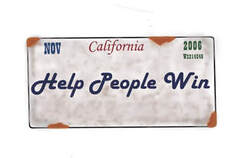 We are finishing up the first half of 2022 with our 4th post on the Eight Essential Elements of a Close Knit Team which appears fitting as we head into the "half time" of the year. Defining what is fair and the differences between leadership and management are crucial for any unit that wants to adapt quickly on their path to this year's championship. Sport and work teams correlate easily and yet the tension that exists around playing time and who has the ball at the end of the game seems to be unique to sport. What is fair, how people lead themselves and how they allow themselves to be directed are foundational issues on a sports team. Understanding how the best teams have dealt with this tension could afford the business leader some transitory insights. Fairness and Roles Warming the bench or getting garbage minutes can really challenge a person’s commitment to putting in the extra effort in practice. The great arbiter of sport is playing time on a team that is competing to win a championship. The coaches control playing time and they need players who are ready to perform their best inside the system they have designed and taught in practice. It is very challenging to create an intense practice environment with players who know they have different amounts of playing time during the game. Sometimes the starters want to take it easy and rest up for the big game and sometimes the back up players aren’t sure the effort is worth it. Why hustle to just watch the game from the bench? The coach has the whistle and can change practice from the fun of scrimmaging to the drudgery of conditioning, but most don’t want to go that well too often. John Wooden, who was voted the coach of the 20th Century by ESPN deployed a tactic and a methodology to address these issues. He communicated individually with each of his players the role he anticipated them playing on the team as early as he could. This declaration was based on what he knew at that time, and he made sure to balance the reality of the present with the possibility of a better future. In business Reid Hoffman and Ben Casnocha wrote “The Alliance” where they introduce the concept of meeting individually every 45 days during an 18-month tour of duty for key employees in an effort to have their best performers feel that the company’s mission and their personal contribution were connected. Importantly the meeting was focused on the employee first and the company second and proved to greatly increase retention rates. In both settings, knowing your role and understanding how that role helps the team succeed goes a long way to maximizing the daily contributions everyone chooses to bring which enables the leaders to build a high-performance team. Wooden’s methodology for fairness is also a piece of timeless treasure that many young coaches and managers fail to implement. Discipline and compliance to small details have become hallmarks of championship lore. Nothing spreads faster than when someone breaks a hard and fast rule of being late to practice or another rule that is in place to keep a large number of people in order. For some reason we all take solace when somebody else gets some time in the penalty box. Zero tolerance can really catch a leader off guard late in the season and potentially having the team distracted at precisely the moment you need them focused on a championship performance. Wooden established early that fairness was not a horizontal line, rather introduced the concept that fairness was earned and deserved based upon past contributions or performances. This subtle change gave him room to have strict rules that enabled buy in by all to prioritize the team above other distractions and yet to not allow small infractions to get in the way of allowing everyone on the team to accomplish the goal of winning the championship. Swen Nater & Ronald Gallimore go into more detail on this methodology in their book “You Haven’t Taught Until They Have Learned.” Swen is a great resource as he was Bill Walton’s back up for three years at UCLA under John Wooden and hardly saw the floor and yet was a first-round draft pick and had a successful 11-year pro career. Defining what is fair and then connecting people to how their role maximizes the contribution they can make to the unit’s success is something a leader should do early and when consistently administered should give everyone the latitude they need to adapt to outside issues that inevitably arise. Leadership and Management Over the last 10 years leadership and management have seen a blending of their definitions and management has been taking it in the teeth with meme after meme declaring the benefits of leadership and the horrors of management. However, when looked at through the lens of competing to win a championship the players and coaches need to work in consensual interdependence and both management and leadership should be clearly defined and differentiated. Understanding and honoring the differences can be a key contributor to the unit’s success. Peter Drucker liked to say that to manage was to think with someone and if necessary to think for someone while they were learning the task. Jack Clark of University of California Rugby fame has a YouTube talk on the differences between leadership and management and how he defines them on his teams. From Clark’s perspective he requires that every player lead themselves and adhere to the values that make up their culture. They accomplish this by having a series of questions they ask themselves and by answering in the affirmative they show their fealty to the unit. Clark further outlines that within the team they need to waste as little time as possible on contextual matters that can be delegated to a small subset of the team, the captains. Everyone on the team consents to being managed and directed by the leaders so they can focus on playing the highly adaptive game of rugby where the coach hardly speaks to the players during the game and only the captains can speak to an official. As an aside, wouldn’t the NBA be a more enjoyable game to watch if they had the same rule? Companies may appear to have some advantages over sports teams when it comes to establishing questions that allow their people to lead themselves, yet we seldom come across them. Identifying your teams most valued values is something you can learn in about two hours with this DIY worksheet. We have found that it really brings people together and allows you a starting point to building out the questions that empower your people to bring their best which is ultimately what they want to do. As a coach or a business leader please consider learning from these dedicated practitioners of unit cohesion. We all know how hard it is to keep it fair and not lose your team’s commitment while you are competing. These greats dealt with the same issues of human nature, and we hope they help you as you are building your best teams in the future.
0 Comments
Leave a Reply. |
Archives
November 2023
Categories
All
Complete Annual Newsletter Volumes
|
